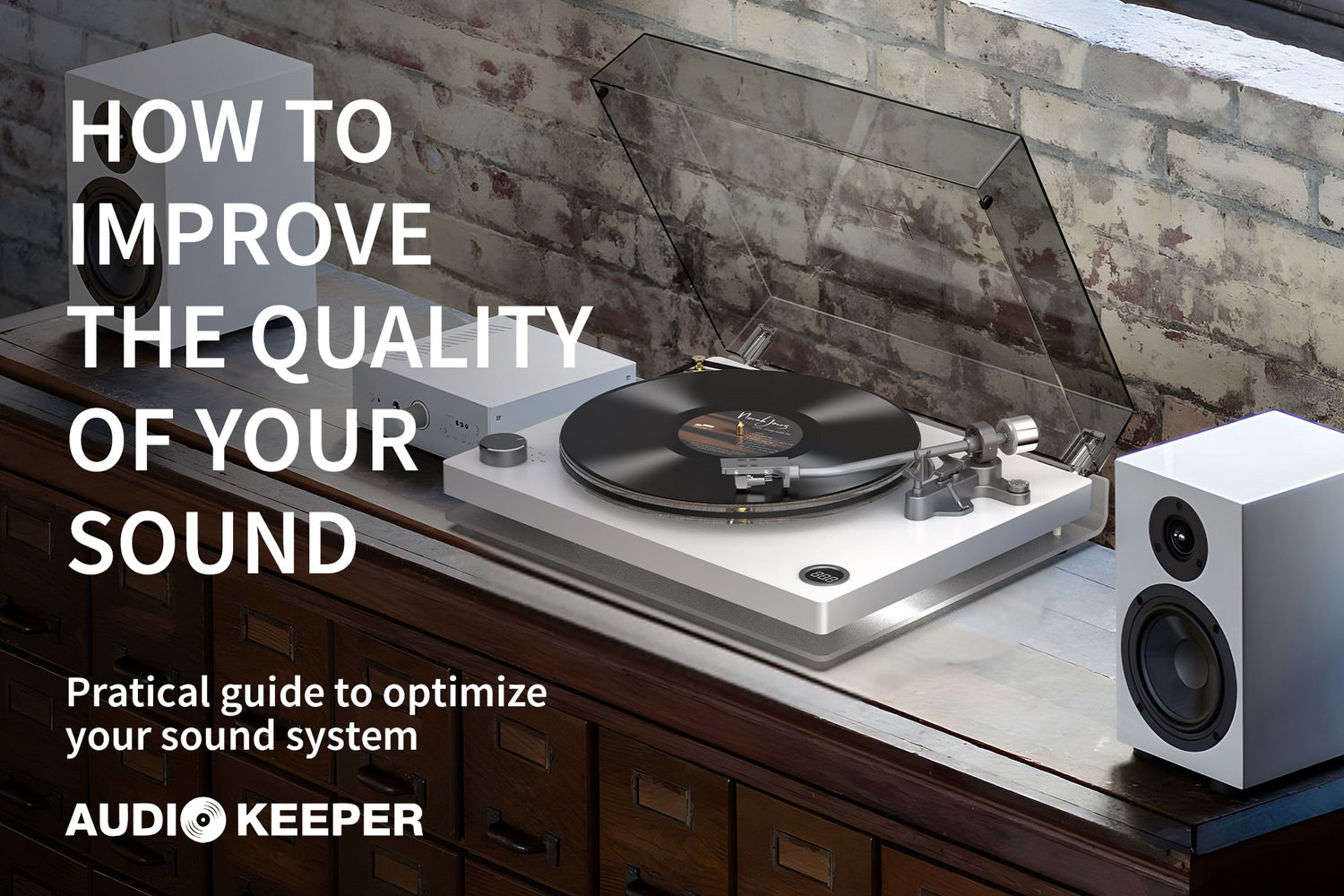Introduction
Achieving the best audio experience requires more than just high-quality equipment. Optimizing your sound system involves understanding the intricate details of audio components, proper setup, and fine-tuning to match your listening environment. This guide will provide a comprehensive overview of how to enhance your sound system, ensuring that you get the most out of your investment. Whether you're an audiophile or a casual listener, these insights will help you elevate your listening experience to new heights.
Understanding Your Sound System Components
To optimize your sound system, it's essential to understand the primary components and their roles:
1. Source Components:
- Turntables: Vinyl records provide a warm, rich sound. High-fidelity turntables with quality cartridges and styluses are essential for audiophiles.
- CD Players: Offer digital precision with the characteristic sound of compact discs. Look for models with high-quality DACs (Digital-to-Analog Converters).
- Digital Streamers: Devices like network audio players or streaming services provide convenient access to high-resolution digital music files.
2. Amplification:
- Preamp: Amplifies the audio signal from the source to a level suitable for the power amplifier. Essential for turntables and some other audio sources.
- Power Amplifier: Provides the necessary power to drive speakers, ensuring they produce sound at sufficient volume without distortion.
3. Speakers:
- Bookshelf Speakers: Compact and versatile, ideal for smaller spaces but can lack deep bass.
- Floor-Standing Speakers: Larger, capable of producing a full range of sound with better bass response.
- Subwoofers: Dedicated to low frequencies, adding depth and impact to the audio experience.
4. Cables and Connectivity:
- Interconnect Cables: Connect source components to the amplifier. Quality cables can reduce noise and signal loss.
- Speaker Cables: Carry the amplified signal to the speakers. Thicker cables with better shielding improve sound quality.
- Power Cables and Conditioners: Ensure a stable and clean power supply to your components, reducing electrical noise and enhancing performance.
Setting Up Your Sound System
Proper setup is crucial to getting the best performance from your sound system. Here are the key steps:
1. Positioning Speakers:
- Speaker Placement: Position speakers at ear level when seated, angled towards the listening position. The distance between speakers should match the distance from the listener for an optimal stereo image.
- Subwoofer Placement: Place the subwoofer near the front speakers, avoiding corners to prevent boomy bass. Experiment with placement for the best sound integration.
2. Room Acoustics:
- Acoustic Treatment: Use acoustic panels, bass traps, and diffusers to control reflections and standing waves. Rugs and curtains can also help reduce unwanted reflections.
- Room Layout: Avoid placing speakers and listening positions near walls or in corners. Symmetrical setups provide a balanced soundstage.
3. Component Isolation:
- Isolation Platforms: Use platforms or feet to minimize vibrations from turntables and other sensitive components.
- Racks and Stands: Properly designed racks can isolate components from each other and reduce vibrations.
4. Calibration and Tuning:
- Speaker Calibration: Use test tones and an SPL meter to ensure balanced sound levels. Some modern systems offer automatic calibration tools.
- Equalization: Adjust the equalizer settings to match your room acoustics and personal preferences. Avoid extreme adjustments that can distort the sound.
Fine-Tuning for Optimal Performance
Once your system is set up, fine-tuning can make a significant difference in sound quality:
1. Matching Components:
- Synergy: Ensure that your components work well together. A mismatch can lead to imbalanced sound or reduced performance.
- Impedance Matching: Match the amplifier and speakers' impedance for efficient power transfer and optimal sound quality.
2. Cable Management:
- Cable Routing: Keep power and signal cables separate to avoid interference. Use cable ties or organizers to keep them tidy.
- Quality Connectors: Invest in high-quality connectors and plugs to ensure a secure and noise-free connection.
3. Power Supply:
- Power Conditioners: Clean up the power supply to your components, reducing noise and enhancing performance.
- Dedicated Circuits: Consider using a dedicated electrical circuit for your sound system to avoid interference from other household appliances.
Enhancing Your Listening Environment
Your listening environment plays a crucial role in your overall audio experience. Here are some tips to optimize it:
1. Furniture and Decor:
- Non-Reflective Surfaces: Use soft furnishings like sofas, curtains, and carpets to reduce sound reflections.
- Symmetry: Aim for a symmetrical layout to ensure a balanced soundstage.
2. Listening Position:
- Sweet Spot: Find the ideal listening position, usually an equilateral triangle with the two main speakers.
- Height: Ensure your ears are at the same height as the tweeters of the speakers when seated.
3. Noise Control:
- Soundproofing: Reduce external noise with soundproof windows, doors, and walls.
- Quiet Environment: Minimize household noise during critical listening sessions.
Advanced Techniques for Audiophiles
For those seeking to take their audio experience to the next level, consider these advanced techniques:
1. High-Resolution Audio:
- File Formats: Use high-resolution audio files (e.g., FLAC, DSD) for superior sound quality.
- Streaming Services: Subscribe to high-resolution streaming services for access to better-quality music.
2. Room Correction:
- DSP (Digital Signal Processing): Use DSP to correct room acoustics and optimize sound. Some modern amplifiers and receivers come with built-in room correction software.
- Equalizers: Fine-tune frequency response to address room-specific issues.
3. Bi-Amping and Bi-Wiring:
- Bi-Amping: Use separate amplifiers for the high and low frequencies of your speakers, reducing distortion and improving clarity.
- Bi-Wiring: Separate the signal paths for high and low frequencies to reduce interference and enhance detail.
4. Custom Builds:
- DIY Acoustic Panels: Build your own acoustic panels and bass traps tailored to your room's specific needs.
- Custom Cables: Create custom cables with high-quality materials for a precise fit and improved performance.
Case Study: Optimizing a Vinyl Turntable Setup
To illustrate the optimization process, let's walk through optimizing a vinyl turntable setup:
1. Component Selection:
- Turntable: Choose a high-fidelity turntable with a solid platter, quality tonearm, and premium cartridge.
- Phono Preamp: Select a phono preamp that matches your turntable's cartridge type (MM or MC).
2. Setup:
- Positioning: Place the turntable on a stable, vibration-free surface, away from speakers.
- Calibration: Balance the tonearm and set the tracking force and anti-skate according to the cartridge specifications.
3. Acoustic Treatment:
- Room Acoustics: Treat the room with acoustic panels and bass traps to control reflections and standing waves.
- Furniture Placement: Arrange furniture to minimize reflections and create a symmetrical listening area.
4. Fine-Tuning:
- Isolation: Use isolation platforms or feet to minimize vibrations affecting the turntable.
- Cartridge Alignment: Ensure the cartridge is properly aligned for accurate tracking and minimal distortion.
5. Listening and Adjustment:
- Test Records: Use test records to fine-tune the setup and ensure optimal performance.
- Equalization: Adjust the phono preamp's equalizer settings to match your room acoustics and personal preferences.
Conclusion
Optimizing your sound system is a multi-faceted process that involves understanding your components, setting them up correctly, and fine-tuning to match your listening environment. By following the guidelines and techniques outlined in this comprehensive guide, you can significantly enhance your listening experience and enjoy the full potential of your audio system. Whether you're a casual listener or an audiophile, these tips will help you achieve a richer, more immersive sound.









Leave a comment
All comments are moderated before being published.
This site is protected by hCaptcha and the hCaptcha Privacy Policy and Terms of Service apply.